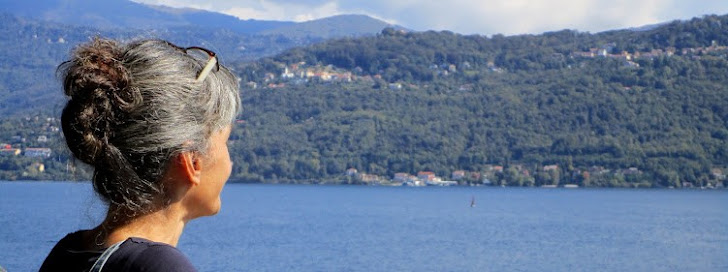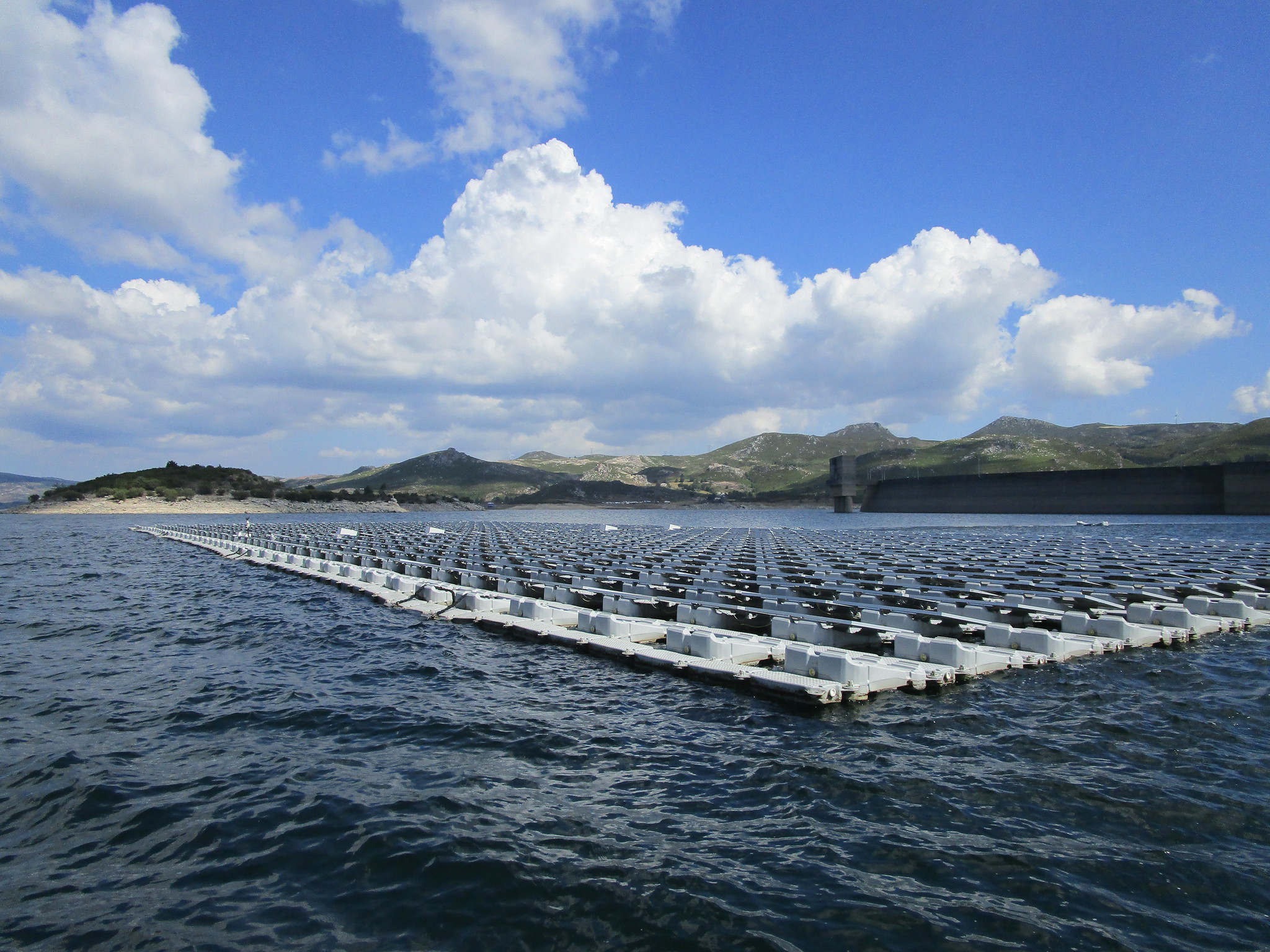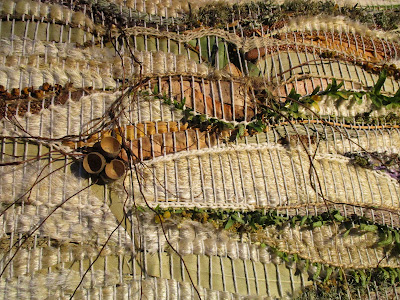"There are certain fundamental rules that all ecosystems must follow. Energy, usually harnessed in from sunlight or, rarely, from the breakdown of minerals, must flow into the ecosystem to replace what is lost through activity and decay. The organisms that can access this energy are the producers, and those that cannot are the consumers, feeding on other living things in order to survive.” Thomas Halliday (2022). Otherlands: A World in the Making. Photo by Monica Pinheiro free to use if you respect the license CC BY-NC-SA ( CC ).

"More than conversation at the interface, it is creative assemblages like these that explore and elaborate the particular dynamic capacities that digital media afford and the ways that through them humans and machines can perform interesting new effects (...) in uniquely particular ways." Lucy Suchman (2009). Human-machine reconfigurations: plans and situated actions.
Showing posts with label energy. Show all posts
Showing posts with label energy. Show all posts
Oct 28, 2022
October
"Weaving is a transformative process with many functions. It involves clearing thought, and organizing personal energy and emotion. A handwoven work resists becoming mere product, or mere art." Sofi Thanhauser (2022). Worn: A People's History of Clothing.
Photo of tapestry (78 x 110 cm) by Monica Pinheiro free to use if you respect the license CC BY-NC-SA ( CC ).
Feb 20, 2022
February
"A renewable power system is not dependent on foreign energy imports nor vulnerable to fuel price manipulations – which are the main worries in an energy infrastructure that is largely based on fossil fuels." Kris De Decker (2018). Keeping Some of the Lights On: Redefining Energy Security. [text inserted in 2022/03/07]. Image by Monica Pinheiro, license CC BY-NC-SA ( CC ).
by
Monica Pinheiro
0
comments
 Labels:
energy,
infrastructure,
intermittence,
Nature-based solutions,
renewables,
resilience
Labels:
energy,
infrastructure,
intermittence,
Nature-based solutions,
renewables,
resilience
Nov 23, 2021
Horizon
"The less energy we waste regretting the past and worrying about the future, the more energy we will have for what's in front of us." Ryan Holiday (2019). Stillness is the Key. Image by Monica Pinheiro, license CC BY-NC-SA ( CC ).
Aug 15, 2021
August
"(...) the magic of our brain lies not in it's constituent elements but in the way those elements unceasingly reweave themselves to form a dynamic, electric, living fabric." David Eagleman (2020). Livewired: the inside story of the ever-changing brain. Image by Monica Pinheiro, license CC BY-NC-SA (CC).
May 14, 2020
May
«The new Earth 2.0 that will emerge after COVID‑19 will be a “new normal”, but many fundamental challenges will still exist. Chief among them is the imperative to collectively work towards an effective and inclusive energy transition. (…) The era of compounded disruptions is a litmus test for the energy transition, asserting the importance of the twin objectives of robustness and resilience.» WEF (2020). Fostering Effective Energy Transition. Italics added. Image by Monica Pinheiro, license CC BY-NC-SA (CC).
by
Monica Pinheiro
0
comments
 Labels:
compounded disruptions,
disruptions,
energy,
litmus test,
report,
resilience,
transitions,
WEF
Labels:
compounded disruptions,
disruptions,
energy,
litmus test,
report,
resilience,
transitions,
WEF
Sep 10, 2019
September
"(...) selective tree breeding to enhance genetic diversity in forests and protect endangered genetic resources increases disease resistance, drought tolerance, and the ability to cope with more frequent and more destructive storms and fires; management practices that focus on mixtures instead of monocultures make forests more resilient, enhance energy and resource efficiency, protect forestry related jobs, increase competitiveness and expand business opportunities within the bio-based
industries;" in European Union LIFE Programm Publications (2019). Ready, steady, green! LIFE helps farming and forestry adapt to climate change. Image by Monica Pinheiro, license CC BY-NC-SA (CC).
by
Monica Pinheiro
0
comments
 Labels:
biodiversity,
books,
efficiency,
energy,
EU,
forest,
management,
resilience,
sintra
Labels:
biodiversity,
books,
efficiency,
energy,
EU,
forest,
management,
resilience,
sintra
Jul 18, 2019
July

"Infrastructure is both relational and ecological—it means different things to different groups and it is part of the balance of action, tools, and the built environment, inseparable from them. (...) to understand the interplay of online and offline behavior (...) include studying the design of infrastructure, understanding the paradoxes of infrastructure as both transparent and opaque, including invisible work in the ecological analysis, and pinpointing the epistemological status of indicators." Susan Leigh Star, 1999. The Ethnography of Infrastructure. American Behavioral Scientists, 43(3), pp 377-391. Image by Monica Pinheiro, license CC BY-NC-SA (CC)
Jun 13, 2019
Lightning speed
"(...) when workers in dirty sectors are offered good jobs in clean sectors (...), and are enlisted as active participants in a green transition, then progress can happen at lightning speed." Naomi Klein, 2015. This Changes Everything. Penguin books. Image by Monica Pinheiro, license CC BY-NC-SA (CC)
by
Monica Pinheiro
1 comments
 Labels:
books,
climate change,
energy,
greenjobs,
participants,
transitions,
work changes,
workers
Labels:
books,
climate change,
energy,
greenjobs,
participants,
transitions,
work changes,
workers
Aug 15, 2016
Visualizing energy data
Chart from USA energy data ( http://energyliteracy.com ):
 |
| onsite interactive map shows energy wasted in different sectors |
"By clicking through the chart, you can see exactly how much energy is used for every activity. (...) Almost 1% is used just to pump natural gas around pipelines; 2% goes to making cardboard and other paper products. Around 16% is used to grow, distribute, and cook food. Looking at the total picture helps make the point that some of the ways that we think about energy aren't quite right. Refining petroleum uses about 6% of total energy in the country, but isn't considered when we think about fuel economy in cars. (...) Mining oil and gas uses even more energy." (in link)
by
Monica Pinheiro
0
comments
 Labels:
chart,
energy,
infrastructures,
USA,
visualizing information,
wast
Labels:
chart,
energy,
infrastructures,
USA,
visualizing information,
wast
Nov 12, 2015
electricity
Boyer, Dominic. "Anthropology Electric." Cultural Anthropology 30, no. 4 (2015) 531–539:
"These days, beyond spectacular weather events or spectacular failures like blackouts, electricity hides in plain sight, whether stored in batteries or flowing in the electrical wires that festoon our social landscapes. We conveniently ignore whole electroscapes until something goes awry."
by
Monica Pinheiro
0
comments
 Labels:
ANT,
electricity,
energy,
grid,
infrastructure,
layers,
networks,
regulations,
worknets
Labels:
ANT,
electricity,
energy,
grid,
infrastructure,
layers,
networks,
regulations,
worknets
Subscribe to:
Comments (Atom)







